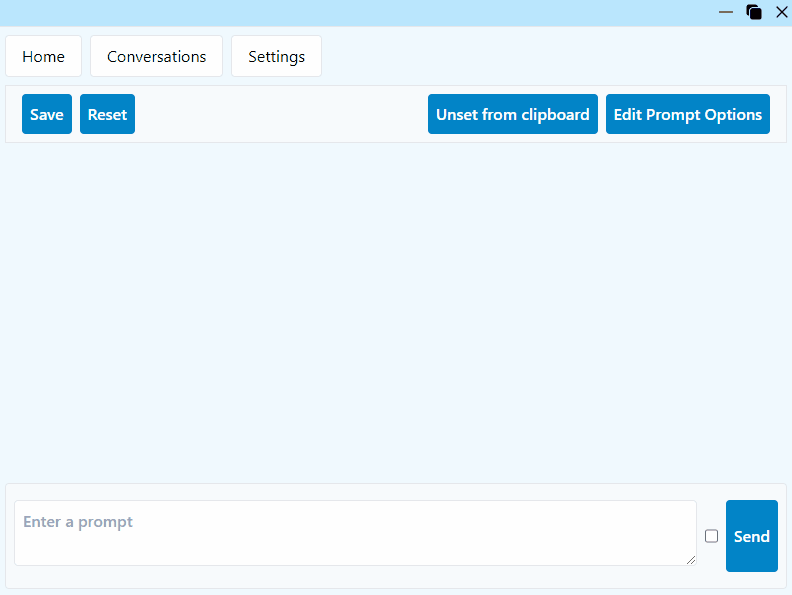
Building ChatGPT with React
Apr 8, 2023
Kacey Cleveland
Building out a ChatGPT clone using OpenAI's API is a great way to familiarize yourself both with OpenAI and React in general in itself. This post will go over a high level example of implementing a ChatGPT clone and the implementation I used in my side project. My codebase is very much a work in progress but you can follow along with my progress in my side project below!
https://github.com/kaceycleveland/help-me-out-here
Note: This is calling the OpenAI API on the client; it should not be used as is unless the requests are being proxied through a backend service of some sort to hide your API keys or if you are truly building a client side application.

Dependencies
To send and receive messages to OpenAI we can use OpenAI's official npm package:
https://www.npmjs.com/package/openai
In addition to this, we will be using TypeScript and Tanstack Query. Tanstack Query will serve as a wrapper to help send and process data to be consumed by our react application. You can read more about Tanstack Query here.
1. Instantiate the OpenAI Client
We first need a way to send OpenAI chat completion requests and get the responses back using the OpenAI npm package:
1import { Configuration, OpenAIApi } from "openai";
2
3const createOpenAiClient = () => {
4 const config = new Configuration({
5 organization: import.meta.env.OPENAI_ORG,
6 apiKey: import.meta.env.OPENAI_KEY,
7 });
8
9 return new OpenAIApi(config);
10};
11
12export const openAiClient = createOpenAiClient();
13Now we can use the `openAiClient` to create chat completion requests as described here.
2. Create a Chat Mutation Hook
We can now create a react hook wrapped around the OpenAI client to make calls to the OpenAI API.
1import { useMutation, UseMutationOptions } from "@tanstack/react-query";
2import { openAiClient } from "../openai";
3import { CreateChatCompletionResponse, CreateChatCompletionRequest } from "openai";
4import { AxiosResponse } from "axios";
5
6export const useChatMutation = (
7 options?: UseMutationOptions<
8 AxiosResponse<CreateChatCompletionResponse>,
9 unknown,
10 CreateChatCompletionRequest
11 >
12) => {
13 return useMutation<
14 AxiosResponse<CreateChatCompletionResponse>,
15 unknown,
16 CreateChatCompletionRequest
17 >({
18 mutationFn: (request) => {
19 return openAiClient.createChatCompletion(request)
20 },
21 ...options,
22 });
23};
243. Consume the useChatMutation hook
1import { ChatCompletionRequestMessage } from "openai/dist/api";
2import { useState, useCallback, useRef } from "react";
3import { useChatMutation } from "./useChatMutation";
4
5function App() {
6 // Store the recieved messages and use them to continue the conversation with the OpenAI Client
7 const [messages, setMessages] = useState<ChatCompletionRequestMessage[]>([]);
8 const inputRef = useRef<HTMLTextAreaElement>(null);
9
10 /**
11 * Use the chat mutation hook to submit the request to OpenAI
12 * This is a basic example, but using tanstack query lets you easily
13 * render loading, error, and success states.
14 * */
15
16 const { mutateAsync: submitChat } = useChatMutation({
17 onSuccess: (response) => {
18 const foundMessage = response.data.choices.length
19 ? response.data.choices[0].message
20 : undefined;
21 if (foundMessage) {
22 const messageBody: ChatCompletionRequestMessage[] = [
23 ...messages,
24 foundMessage,
25 ];
26 setMessages(messageBody);
27 }
28 },
29 });
30
31 const handleSubmit = useCallback(() => {
32 if (inputRef.current?.value) {
33 const messageBody: ChatCompletionRequestMessage[] = [
34 ...messages,
35 { role: "user", content: inputRef.current?.value },
36 ];
37 setMessages(messageBody);
38 // For simplicility, the settings sent to OpenAI are hard coded here.
39 submitChat({
40 model: "gpt-3.5-turbo",
41 max_tokens: 100,
42 presence_penalty: 1,
43 frequency_penalty: 1,
44 messages: messageBody,
45 });
46 }
47 }, [messages]);
48
49 return (
50 <div className="App">
51 <div>
52 {messages.map((message) => {
53 return (
54 <div>
55 <div>{message.role}</div>
56 <div>{message.content}</div>
57 </div>
58 );
59 })}
60 </div>
61 <div className="card">
62 <textarea ref={inputRef}></textarea>
63 <button onClick={handleSubmit}>Submit</button>
64 </div>
65 </div>
66 );
67}
68
69export default App;
70Fin
This example can be expanded upon in various ways such as:
- Customizing the interface/settings being sent with the messages
- Customizing old and future messages to "prime" the AI for future responses.
- Better UI rendering for different states
- Better UI rendering for returned data. (Think rendering code blocks or markdown from the returned OpenAI data!)
Most of the above is what I am working on in my project:
https://github.com/kaceycleveland/help-me-out-here
If you want the full repo of this basic example, check it out here:
https://github.com/kaceycleveland/openai-example